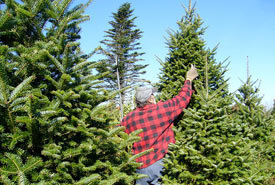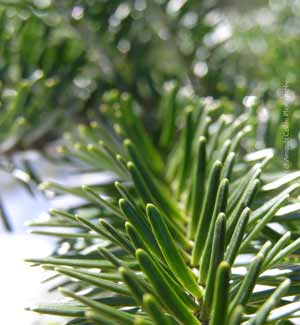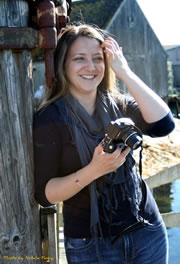For the love of real Christmas trees

Balsam fir Christmas tree pruning (Photo by Blake Wile/Wikimedia Commons)
If I even think about a balsam fir I can smell it. Of all the scents in nature, isn’t it one of the best aromas? Especially during the holidays! I love my real balsam fir Christmas tree; from selecting it at the tree lot to how it smells once it is set up in my house. I even find its falling needles slightly endearing and love how they linger to remind me of relaxing over the holidays and enjoying the glow of twinkling lights on balsam fir branches.
But there are many, many more reasons why I love my real Christmas tree.
For starters my real Christmas tree helps me feel connected to nature, and connected to tradition. I remember heading out with my parents when I was young in search of a Christmas tree. My father, with his axe in hand, would search for what he considered the perfect tree. In my small rural community I don’t remember there being tree lots — we would just head out into the forest. I will always remember the fresh air, the smell of the forest and the time with my dad. It is experiences like this that helped foster my love and appreciation of nature and being outdoors.
Today I am excited about my Christmas tree search at the local tree lot or u-pick farm. I’m happy to support tree farmers everywhere, particularly in my little home province of Nova Scotia, where the Christmas tree industry generates approximately $52M toward the Nova Scotia economy annually.

Spruce (Photo by Amanda Cashin)
The Christmas tree industry is a completely sustainable agriculture industry. Trees are renewable, reusable and biodegradable. A fake tree, while reusable from year to year, at some point will end up in a landfill. A real tree, on the other hand, can be composted and can even be reused in innovative ways (for example, wildlife rehabilitation facilities will gladly accept donations of used trees after the holidays for their animal enclosures).
Tree farms are completely renewable. Some people don’t want to cut down a tree. I can appreciate that, but Christmas trees should be in no way associated with deforestation. Christmas trees are grown specifically to be cut down, on land designated for farming them. Trees are either replanted or in most cases, grow again on their own naturally from the previous tree’s seeds. As the old trees are cut down, tiny new ones are eagerly waiting to see the sun and are ready to grow in their place.
Just like supporting any farm practice, I like to think of Christmas trees as I would think of buying lettuce at the farmer’s market. When you harvest lettuce, as you harvest a tree, more is waiting to grow. I personally feel connected to the earth and nature when purchasing anything grown from seed by dedicated farmers. The ingredients needed to produce a farmed Christmas tree after all are simply energy from the sun, water from the clouds and nutrients from the soil.
Tree farms are also an important contributor to the nature around us, and to the air we breathe. Did you know that every acre of Christmas trees produces enough daily oxygen for 18 people? There are roughly 30,000 acres (12,140 hectares) of Christmas trees in production in Nova Scotia alone, which means enough oxygen for approximately 540,000 people daily.
For me personally, a few needles to sweep up on the floor once in a while is a small price to pay for a connection to nature, my health, the health of my province’s economy and of the planet. And, of course a small price to pay for one of the most wonderful, unique and nostalgic smells I feel lucky to be able to experience.
Stats and info in this post are courtesy of Christmas Tree Council of Nova Scotia.


